Intelligence Quotient (IQ) has long been a topic of fascination in psychology. IQ tests are designed to measure a person's cognitive abilities. GBI IQ Test integrated the most accurate and scientific scoring methods: Item Response Theory (IRT) and Expected A Posteriori (EAP) to measure your ability precisely. The two modern methods help minimize the disadvantages of traditional IQ measurements.
Measuring IQ using Item Response Theory involves creating a series of items that can accurately fit an individual's cognitive abilities, while EAP is the mathematical method to calculate the final IQ score.
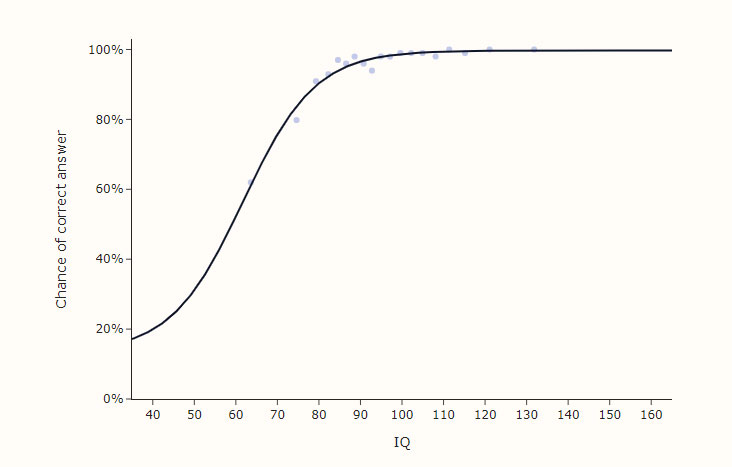
(the IRT curve)
Item Response Theory is a mathematical framework used to improve the precision and validity of IQ tests. Unlike traditional IQ tests that use classical test theory, which assumes that every question has a fixed difficulty and every participant has a fixed ability level, IRT models consider that the difficulty of each question can vary and that individuals' abilities can be estimated more accurately.
The Rasch equation (1PL-IRT model):
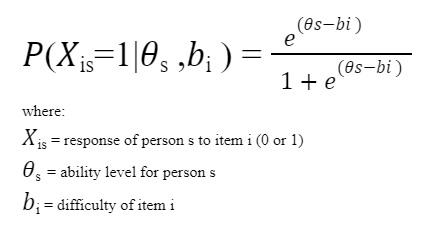
The equation of 2PL-IRT model:
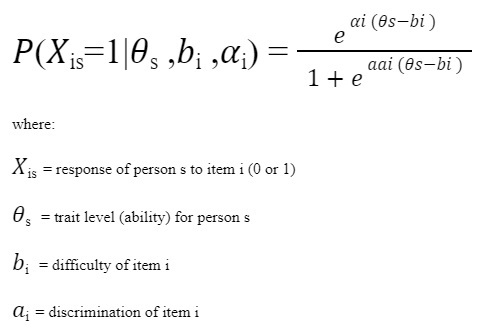
Combining the equations of an individual's capability and the difficulty of an item, we can visually represent test items and their attributes through an Item Characteristic Curve (ICC). This curve graphically illustrates the likelihood of an individual answering a question right based on their skill level. The vertical axis denotes the probability of a correct answer, while the horizontal axis represents the test-taker's capability. Each curve corresponds to a specific item, enabling us to assess the traits of a test item and predict its performance for specific test participants.
Key Principles of IRT:
Logit equation for item difficulty:

where “p” is the proportion of people taking the test who correctly answered the item.
Customized Assessments:
IRT's flexibility extends to designing tailored tests that evaluate specific skills or knowledge areas. By acknowledging that different individuals may find different questions equally challenging based on their cognitive abilities, IRT identifies areas of strength and weakness. This approach enables the creation of individualized assessments by selecting items most relevant to a person's IQ.
Precision in Measurement:
In contrast to classical test theory, which assumes uniform item difficulty and discrimination, IRT models consider each item's unique characteristics. This allows assessments to be finely tuned to an individual's ability level, ensuring greater accuracy in measuring their cognitive abilities. The advent of IRT heralds a new era in IQ testing, one characterized by tailored precision and a deeper understanding of human intelligence
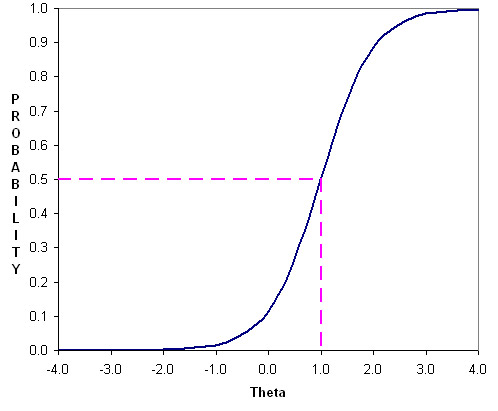
(the IRT model)
The Expected A Posteriori method is a statistical technique used in IRT to estimate an individual's IQ score more accurately based on their responses to test items. It enhances the precision of IQ measurement by taking into account the distribution of abilities in the population.
The technique capitalizes on Thomas Bayes acknowledgement:
Prior Probability x Data Probability => Posterior Probability
This can be mathematically represented as: P (B' | {X}) = P (B') x P ({X} | B' ) / Σ [ P (B) x P ({X} | B) ] (summed over all possible B values)
Here, B' refers to a specific measurement value for an individual, and we sum over all potential values of our preliminary notion, denoted as B. {X} stands for the set of responses given by the person.
We can find the Expected A Posteriori estimate of the person's measure through the following equation:
EAP estimate = Σ [B x P (B | {X})] (summed over all possible B values)
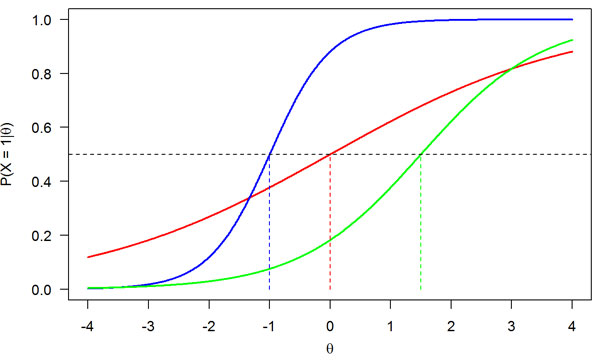
The practical application of IRT model and EAP method in assessing IQ test is as below:
Step 1: Build the question bank
Conduct the items’ pre-testing to a sample population to gather initial data on the performance of each item.
Then, use IRT analysis to estimate the the item’s characteristics, including:
Step 2: Conduct the Adaptive Testing
The IQ test is administered through a computerized adaptive testing system. That means the IRT parameters can be used to select items dynamically during the test, based on the respondent's performance on previous items.
The item difficulty will be increased if the participant gives the correct answer for the previous question. Otherwise, the item difficulty will be decreased to fit the participant’s ability.
Step 3: Using EAP method to find out the IQ score
Assign an IQ score based on the EAP estimate of the individual’s ability level. This score is derived from the individual's responses to the items and the IRT parameters of those items, combined with the assumed prior distribution of ability levels in the population.
Classical Test Theory (CTT) is a traditional framework used in educational and psychological measurement to understand and analyze test scores. While it has been widely used in various fields, including the measurement of IQ, it is essential to note that CTT has certain limitations when applied to IQ testing.
The equation for CTT is as below:
X = T + E
in which:
X: fallible, observed score
T: true score
E: random error
IQ measures someone’s intelligence through various standard IQ tests in which participants are required to answer the available questions to test their pattern recognition, memory, and problem-solving abilities. During decades of development, there have been various IQ tests along with different corresponding IQ measurements. IQ was originally measured by taking someone’s mental age, dividing it by their chronological age, and then multiplying by 100.
For example, if a 20-year-old student has a mental age of 25, he or she has an IQ score of 25/20 * 100 = 125.
Pros and cons of CTT in assessing IQ score:
Pros:
Cons:
|
IRT model and EAP method |
CTT method |
|
Modern approach to test development and analysis. |
Older and more traditional approach to test development and analysis. |
|
Focuses on modeling the relationship between an individual's ability and their responses to each test item. |
Relies on the overall test score without considering the characteristics of individual test items. |
|
Provide detailed information about the difficulty and discrimination of each test item. |
Assumes that measurement error is constant across different ability levels, which may not be the case in reality. |
|
More flexible and accurate in measuring an individual's ability because they can adapt to different levels of difficulty and provide accurate estimates. |
Doesn't provide as much detailed information about the test items themselves. |
Differences between CTT method and IRT & EAP method in measuring IQ
Measuring IQ is crucial for educational, employment, clinical, and research purposes. The integration of Item Response Theory and the Expected A Posteriori method into IQ measurement has significantly improved the accuracy, fairness, and precision of these assessments.